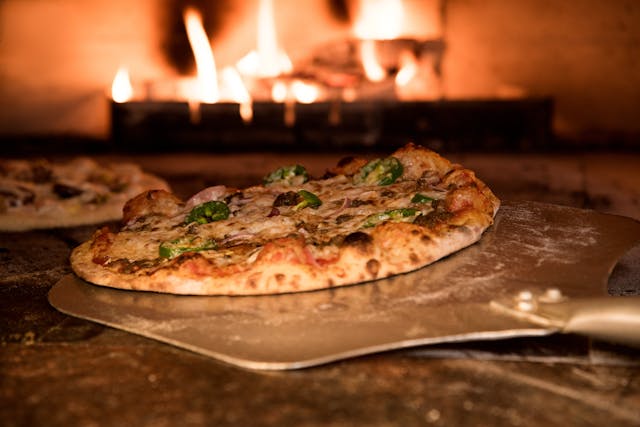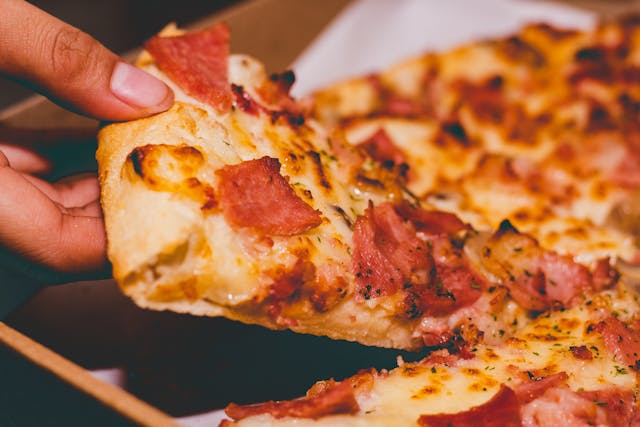Pizza is more than just a dish; it’s a global phenomenon with rich regional variations. Each region boasts its own unique style, reflecting local tastes, traditions, and ingredients. From the classic New York slice to the traditional Neapolitan pie, pizza’s regional styles offer a delightful exploration of culinary diversity. In this comprehensive guide, we’ll delve into seven prominent regional pizza styles, with detailed insights into the characteristics, history, and cultural significance of each.
1. The Essence of Pizza: A Brief History
Pizza’s origins trace back to ancient civilizations, but the modern version we recognize today evolved in Naples, Italy. Early forms of pizza were simple flatbreads topped with various ingredients, but it wasn’t until the late 19th century that the pizza we know and love emerged. The Margherita pizza, named after Queen Margherita of Savoy, is credited with solidifying pizza’s place in culinary history. From Naples, pizza spread throughout Italy and eventually across the globe, leading to the diverse regional styles we enjoy today.
2. Neapolitan Pizza: The Classic Italian Pie
Neapolitan pizza is the epitome of traditional Italian pizza. Originating from Naples, this style is characterized by its simplicity and high-quality ingredients. Neapolitan pizza adheres to strict guidelines, including the use of San Marzano tomatoes, fresh mozzarella, and a thin, soft crust. The dough is made with type 00 flour, water, salt, and yeast, and it is allowed to rise for at least 24 hours.
The cooking process involves baking the pizza in a wood-fired oven at extremely high temperatures, typically around 900°F (480°C), for about 60 to 90 seconds. This method creates a pizza with a perfectly charred, airy crust and a soft, flavorful center. The traditional toppings include Margherita (tomato, mozzarella, and basil), Marinara (tomato, garlic, and oregano), and Quattro Stagioni (four seasons with various toppings representing each season).
3. New York-Style Pizza: The Iconic Slice
New York-style pizza is arguably the most recognizable American pizza style, known for its large, foldable slices and distinctive crust. This style traces its origins back to Italian immigrants who brought their pizza-making traditions to New York City in the early 20th century. The style evolved as bakers adapted to local ingredients and tastes, resulting in a pizza that is both hearty and versatile.
Characteristics and Ingredients:
New York-style pizza features a thin, yet crispy crust that is pliable enough to be folded in half. The dough is made with high-gluten bread flour, which gives it its signature chewiness. The pizza is typically topped with a simple tomato sauce made from canned tomatoes, seasoned with herbs like oregano and basil. Shredded mozzarella cheese is used, and additional toppings can vary widely, from classic pepperoni to more adventurous choices like pineapple and sausage.
Preparation and Baking:
Unlike Neapolitan pizza, New York-style pizza is baked in a standard gas pizza oven, which operates at lower temperatures than the traditional wood-fired ovens. The baking temperature is usually around 550°F (290°C), and the pizza is cooked for about 10 to 15 minutes. This method results in a crust that is crisp on the outside but soft and pliable enough to be folded.
Cultural Significance:
New York-style pizza has become a cultural icon in the United States. It is often associated with the hustle and bustle of New York City and has earned a reputation for being the quintessential American pizza. The style’s popularity extends beyond New York, with pizzerias across the country offering their own versions of this beloved pie. The pizza’s ability to be eaten quickly on the go makes it a favorite among busy New Yorkers and tourists alike.
4. Chicago Deep-Dish Pizza: A Hearty Favorite
Chicago deep-dish pizza is a bold departure from traditional pizza styles, featuring a thick, buttery crust that resembles a pie more than a pizza. This style emerged in Chicago in the 1940s, and it has since become a hallmark of the city’s culinary scene. Deep-dish pizza is known for its rich layers of cheese, toppings, and tomato sauce, creating a hearty and satisfying meal.
Characteristics and Ingredients:
The deep-dish pizza crust is made with a high-fat dough that includes butter or oil, resulting in a rich, flaky texture. The crust is pressed into a deep, round pan, forming a bowl-like shape that holds generous amounts of cheese and toppings. The cheese used is typically a combination of mozzarella and other cheeses like provolone or Parmesan. The toppings are placed directly on top of the cheese, and the pizza is finished with a layer of tomato sauce.
Preparation and Baking:
Chicago deep-dish pizza is baked in a deep, round pan, often resembling a cake pan. The pizza is cooked at a lower temperature than other styles, around 400°F (200°C), for about 30 to 45 minutes. This slower baking process allows the thick layers of cheese and toppings to melt and meld together. The result is a pizza with a crispy, buttery crust and a rich, satisfying filling.
Cultural Significance:
Chicago deep-dish pizza is a beloved symbol of the city and has a devoted following among pizza enthusiasts. Its unique style makes it a distinctive departure from other regional pizzas, and it is often featured in food tours and culinary guides highlighting Chicago’s diverse food scene. Deep-dish pizza’s heartiness also makes it a popular choice for sharing among groups, adding to its appeal as a communal dish.
5. Sicilian Pizza: A Square Slice with a Twist
Sicilian pizza, also known as Sfincione, is a distinct style originating from Sicily. This pizza is characterized by its square shape, thick crust, and rich, savory toppings. The style has its roots in Sicily’s traditional baking methods, and it has evolved over time to become a popular variation in both Italy and the United States.
Characteristics and Ingredients:
Sicilian pizza features a thick, airy crust that is baked in a rectangular or square pan. The dough is often made with a high-hydration formula, resulting in a light and fluffy texture. The classic toppings include a tomato sauce made with onions, anchovies, and herbs, as well as a layer of grated cheese, such as Pecorino or Parmesan. Other common toppings include olives, capers, and various types of cured meats.
Preparation and Baking:
The dough for Sicilian pizza is allowed to rise for an extended period, which contributes to its light and airy texture. The pizza is typically baked at a moderate temperature, around 475°F (245°C), for about 20 to 30 minutes. The result is a pizza with a thick, crispy crust and a generous layer of toppings that meld together during the baking process.
Cultural Significance:
Sicilian pizza reflects the rich culinary traditions of Sicily, incorporating elements from the island’s diverse food history. It is a popular choice for casual gatherings and is often served as a street food or in pizzerias specializing in Sicilian-style pies. The style’s adaptability and hearty nature make it a favorite among pizza lovers who appreciate a thicker, more substantial pizza.
6. California-Style Pizza: Fresh and Innovative
California-style pizza is known for its emphasis on fresh, high-quality ingredients and innovative toppings. This style emerged in the 1980s, influenced by California’s diverse culinary scene and the farm-to-table movement. California-style pizza often features unconventional toppings and a focus on seasonal produce.
Characteristics and Ingredients:
California-style pizza typically features a thin, crisp crust that serves as a base for a wide array of fresh toppings. Common ingredients include seasonal vegetables, artisanal cheeses, and unique proteins like goat cheese or smoked salmon. The tomato sauce is often replaced or supplemented with other bases, such as pesto or white sauce. The emphasis is on vibrant, fresh flavors that highlight the quality of the ingredients.
Preparation and Baking:
California-style pizza is baked in a standard oven at temperatures similar to those used for New York-style pizza, around 500°F (260°C). The pizza is cooked quickly to preserve the freshness of the toppings and the crispiness of the crust. The result is a pizza that is light, flavorful, and visually appealing, with an emphasis on creativity and freshness.
Cultural Significance:
California-style pizza represents the state’s innovative approach to food and its commitment to using local, seasonal ingredients. The style has gained popularity beyond California, influencing pizzerias and chefs across the United States. Its focus on fresh ingredients and creative toppings has made it a favorite among food enthusiasts who appreciate culinary experimentation and healthy eating.
7. Detroit-Style Pizza: A Square Slice with a Crunch
Detroit-style pizza is a relatively recent addition to the pantheon of regional pizza styles, but it has quickly gained recognition for its unique characteristics. This style originated in Detroit in the 1940s and is known for its rectangular shape, thick crust, and distinctive cheese-and-sauce layering.
Characteristics and Ingredients:
Detroit-style pizza features a thick, airy crust with a crispy, caramelized edge. The dough is typically made with a high-hydration formula and is allowed to rise in a rectangular pan. The pizza is topped with a layer of cheese, often a blend of mozzarella and cheddar, and then finished with a layer of tomato sauce. This “sauce on top” approach allows the cheese to caramelize around the edges, creating a distinctive flavor and texture.
Preparation and Baking:
Detroit-style pizza is baked in a well-oiled rectangular pan, which contributes to the crispy, caramelized crust. The pizza is cooked at a moderate temperature, around 475°F (245°C), for about 20 to 30 minutes. The result is a pizza with a crunchy, golden-brown crust and a generous layer of cheese and sauce.
Cultural Significance:
Detroit-style pizza is a beloved local favorite and has gained recognition beyond the city limits. Its unique combination of textures and flavors has made it a standout in the world of regional pizzas. The style’s popularity continues to grow, and it is often featured in food festivals and culinary guides highlighting Detroit’s diverse food scene.
Conclusion
Exploring regional pizza styles offers a fascinating glimpse into the diverse culinary traditions that define this beloved dish. From the classic Neapolitan pizza to the innovative California-style pie, each regional variation brings its own unique flavors and techniques to the table. Whether you prefer the thin, foldable slices of New York-style pizza or the rich, hearty layers of Chicago deep-dish, there’s a regional pizza style to suit every palate. So next time you indulge in a slice, take a moment to appreciate the rich history and regional nuances that make pizza a truly global phenomenon.
Website: https://www.vincenzaspizza.com/


